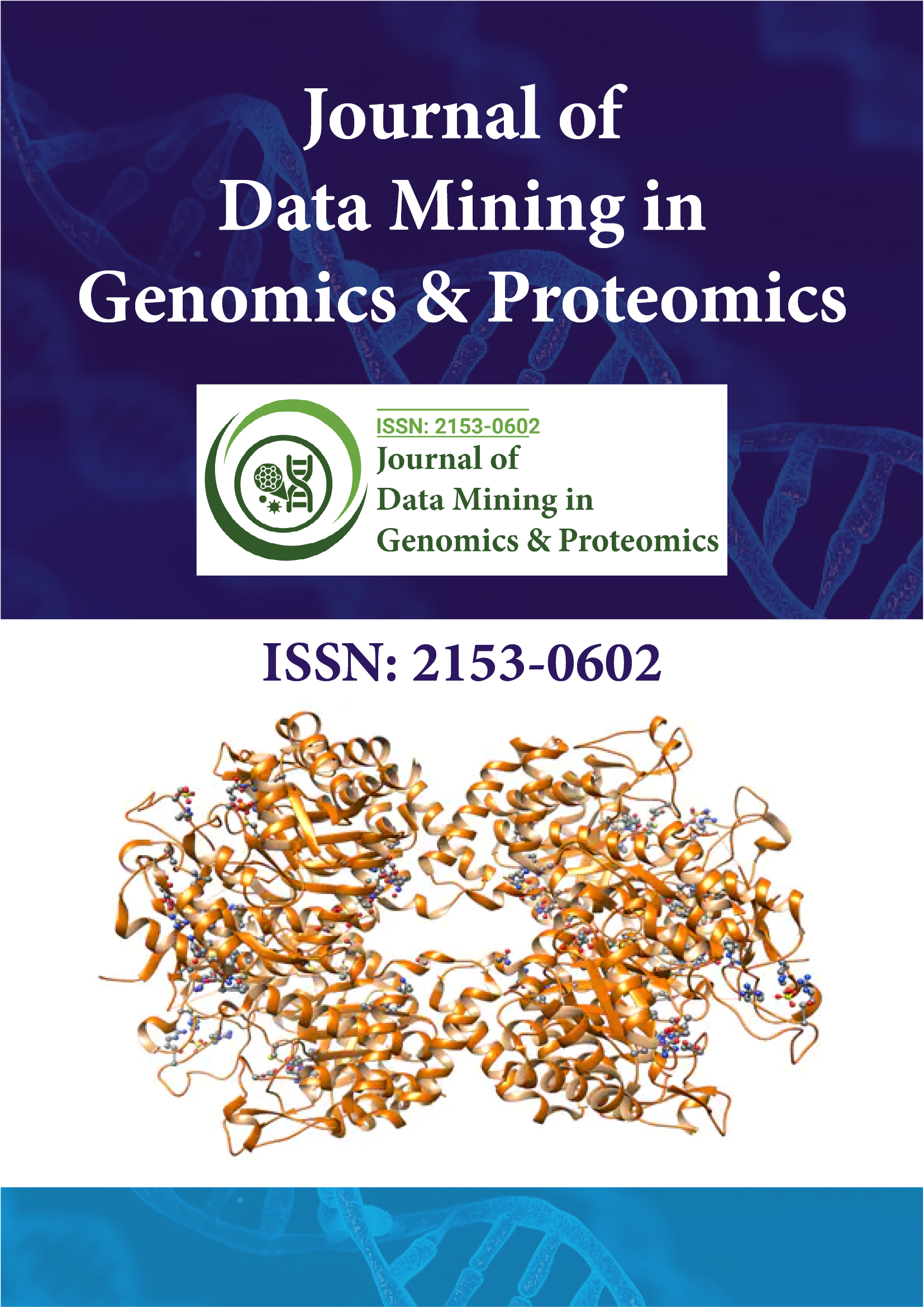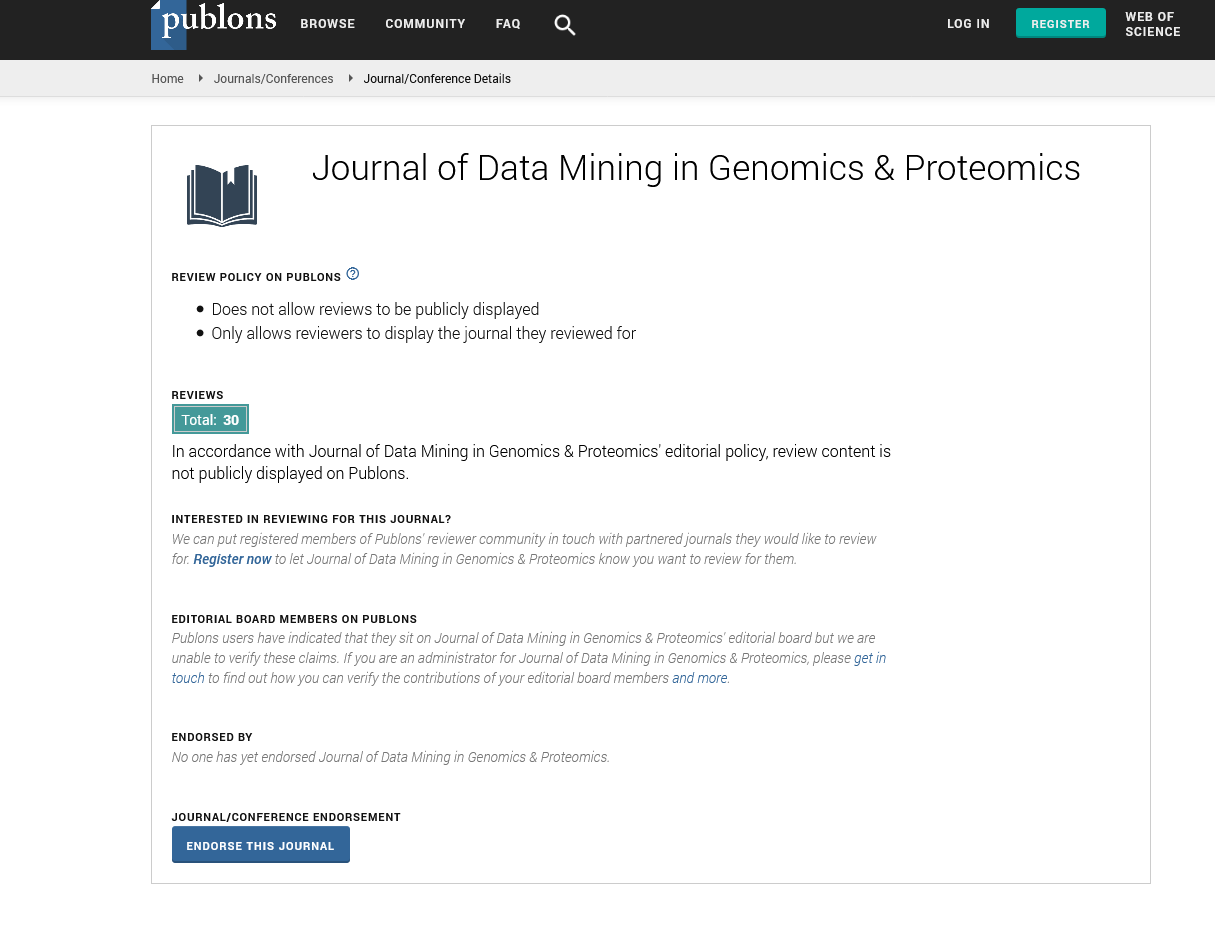Indexed In
- Academic Journals Database
- Open J Gate
- Genamics JournalSeek
- JournalTOCs
- ResearchBible
- Ulrich's Periodicals Directory
- Electronic Journals Library
- RefSeek
- Hamdard University
- EBSCO A-Z
- OCLC- WorldCat
- Scholarsteer
- SWB online catalog
- Virtual Library of Biology (vifabio)
- Publons
- MIAR
- Geneva Foundation for Medical Education and Research
- Euro Pub
- Google Scholar
Useful Links
Share This Page
Journal Flyer

Open Access Journals
- Agri and Aquaculture
- Biochemistry
- Bioinformatics & Systems Biology
- Business & Management
- Chemistry
- Clinical Sciences
- Engineering
- Food & Nutrition
- General Science
- Genetics & Molecular Biology
- Immunology & Microbiology
- Medical Sciences
- Neuroscience & Psychology
- Nursing & Health Care
- Pharmaceutical Sciences
Commentary - (2025) Volume 16, Issue 1
Network-Based Analysis of Protein-Protein Interactions in Rare Genetic Disorders
Mei Lin*Received: 24-Feb-2025, Manuscript No. JDMGP-25-29290; Editor assigned: 26-Feb-2025, Pre QC No. JDMGP-25-29290 (PQ); Reviewed: 12-Mar-2025, QC No. JDMGP-25-29290; Revised: 18-Mar-2025, Manuscript No. JDMGP-25-29290 (R); Published: 26-Mar-2025, DOI: 10.35248/2153-0602.25.16.374
Description
Rare genetic disorders, though individually uncommon, collectively affect millions of individuals worldwide and pose significant challenges in clinical diagnosis, treatment and understanding of underlying disease mechanisms. These disorders often arise from mutations in specific genes that disrupt normal cellular function, leading to a range of phenotypic abnormalities. However, the phenotypic variability and the limited availability of patient data hinder traditional approaches to understanding their pathogenesis. Recent advancements in computational biology have introduced network-based analysis of Protein-Protein Interactions (PPIs) as a powerful approach to uncover molecular mechanisms in rare genetic diseases. By leveraging systems biology and integrative data mining, researchers can contextualize disease-associated genes within broader interaction networks, shedding light on dysregulated pathways and potential therapeutic targets.
Protein-protein interaction networks represent the complex web of physical or functional associations between proteins within a cell. These networks are crucial for nearly every biological process, including signal transduction, gene regulation, metabolic control and immune responses. In the context of rare genetic disorders, mutations in one or a few genes can propagate their effects through the PPI network, disrupting multiple processes and leading to diverse clinical manifestations. Network-based approaches provide a global view of these perturbations by mapping disease-related proteins, or "seed genes," and identifying their direct and indirect interactors. This enables researchers to understand how localized mutations can lead to systemic phenotypic consequences.
A central concept in network biology is the "guilt-by-association" principle, which assumes that proteins interacting with disease-associated proteins are also likely to be involved in similar pathological processes. This idea allows for the prioritization of candidate genes in unsolved cases of rare disorders where only partial genetic information is available. By constructing PPI networks and analyzing their topological properties such as node degree, betweenness centrality and clustering coefficients, researchers can identify hub proteins and bottlenecks that may serve as key regulators or potential drug targets.
Network-based analysis also facilitates disease gene prediction. In many rare disorders, whole-exome sequencing or genome-wide association studies yield hundreds of variants of unknown significance. PPI networks can be used to filter these candidates based on their proximity to known disease genes or their involvement in enriched pathways. For example, if a variant occurs in a protein that interacts with multiple proteins already implicated in the disease, its functional relevance is more likely. This network-guided prioritization enhances the interpretability of genetic data and improves the efficiency of variant annotation pipelines.
Moreover, integrating PPI data with other omics layers such as transcriptomics, proteomics and metabolomics enhances the power of network analysis. Multi-omics integration allows for the construction of context-specific interactomes that reflect tissue-specific expression or disease states. For instance, in a rare neurological disorder, filtering the PPI network based on brain-specific expression data can highlight relevant modules and minimize noise from irrelevant interactions. This approach increases biological relevance and improves the chances of identifying true disease drivers.
Network clustering algorithms, such as MCODE, Cluster ONE and Markov Clustering (MCL), are often employed to detect functional modules or sub-networks within the global PPI map. These modules can represent protein complexes or co-regulated pathways that function together in cellular processes. In rare diseases, identifying such modules can uncover unknown components of disease-related pathways or highlight converging mechanisms between different genetic mutations. Additionally, comparing these modules across related disorders can reveal shared molecular signatures and offer insights into disease classification and phenotypic overlap.
A particularly promising application of PPI network analysis lies in drug repurposing and therapeutic targeting. By identifying network regions perturbed in a given disorder, researchers can search for drugs known to target proteins within or around these regions. This strategy is especially valuable in rare diseases, where dedicated drug development is often economically unfeasible. Network-based drug repositioning accelerates the discovery of potential treatments by focusing on existing drugs with known safety profiles, thereby reducing the cost and time required for clinical translation.
Despite its potential, network-based PPI analysis in rare genetic disorders faces several challenges. First, the quality and completeness of PPI datasets can significantly influence results. Many existing interaction databases, such as STRING, BioGRID and IntAct, rely on high-throughput experimental methods or computational predictions, which may include false positives or miss context-specific interactions. To mitigate this, researchers must carefully curate interaction data and, when possible, validate key findings experimentally. Second, genetic heterogeneity and incomplete penetrance in rare diseases complicate the construction of disease-specific networks, necessitating personalized or patient-specific network models.
Furthermore, rare diseases often lack large-scale patient cohorts, which limits statistical power for association studies. However, network approaches can partially overcome this by incorporating cross-species data or leveraging information from more common, phenotypically similar disorders. Cross-species conservation of PPIs, for example, allows the use of model organism data to infer interactions in human proteins. This expands the scope of analysis and can guide functional studies in experimental models.
In conclusion, network-based analysis of protein-protein interactions provides a robust and scalable framework for deciphering the molecular architecture of rare genetic disorders. By mapping disease-associated mutations onto the human interactome and exploring their systemic impacts, researchers can identify key regulators, uncover novel disease genes and propose potential therapeutic strategies. As data integration techniques and interaction databases continue to improve, the application of network biology will become increasingly central to the study and treatment of rare diseases. This holistic, systems-level perspective represents a critical advancement in our ability to interpret complex genetic information and transform it into actionable biomedical insights.
Citation: Lin M (2025). Network-Based Analysis of Protein-Protein Interactions in Rare Genetic Disorders. J Data Mining Genomics Proteomics.16: 374.
Copyright: © 2025 Lin M. This is an open access article distributed under the terms of the Creative Commons Attribution License, which permits unrestricted use, distribution and reproduction in any medium, provided the original author and source are credited.

